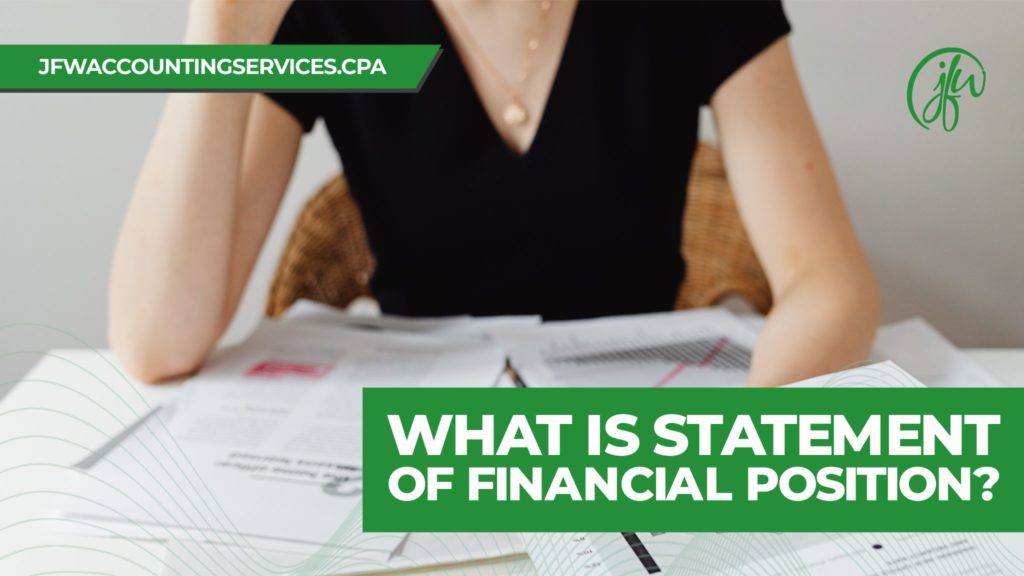Running a nonprofit organization is no simple task. Between grant management, organizing fundraisers, collecting membership dues, and scheduling volunteers, every organization faces unique challenges. For many people in nonprofit leadership positions, understanding the common and required financial statements is one of those challenges, but a necessary task for the organization to carry out its mission while remaining compliant and transparent.
In this article, we explore the Statement of Financial Position, a standard component in the nonprofit financial package. Continue reading to learn what makes up this statement, who benefits from it, and some best practice tips for reading and creating your Statement of Financial Position.
Assets = Liabilities + Equity
A Statement of Financial Position is the nonprofit organization’s equivalent to a for-profit company’s Balance Sheet. When prepared accurately the statement shows what the entity owns, and what they owe. Unlike other financial reports, like the Statement of Activities, the Statement of Financial Position gives a snapshot of the financial position as of a certain date.
The Statement of Financial Position is prepared annually at the end of the organization’s fiscal year. However, compiling and reviewing the statement more frequently, like at the end of each month, is a great practice for every organization. The components of a Statement of Financial Position include assets, liabilities, and equity, where:
Assets = Liabilities + Equity
Assets
A nonprofit organization’s assets represent the cash and fixed assets a company owns as well as money that is owed to the organization by members, donors who have made formal commitments, and any other entity or organization that has a noted debt to the nonprofit. On the statement, assets are categorized into two components: long-term assets and short-term, or current, assets.
- Long-term assets may also be called non-current assets. They may be tangible or non-tangible items that the company owns and will benefit from longer than the next twelve months. Examples of long-term assets may include property, plant, computers and computer software, equipment, vehicles, goodwill, trademarks, patents, and franchises. The “account balance” for each asset generally reflects the purchase price of the asset.
- Current assets, or short-term assets, are assets that the organization will use or can be liquidated in the next year. Current assets may include checking and savings account balances, petty cash, accounts receivable (money owed to the organization, inventory, and prepaid expenses, like insurance or staff member benefits.
Liabilities
A nonprofit’s liabilities represent money the organization owes to other people or entities. Just like assets, long-term liabilities can be separated into long-term and short-term liabilities.
- Long-term liabilities may also be named noncurrent liabilities and they describe the obligations or debts that the nonprofit organization will repay in a period of time greater than one year. Examples of long-term liabilities include bank loans, notes payable, bonds payable, owed lease expenses, and any real estate or UBIT tax liabilities.
- Current liabilities include obligations that must be taken care of during the next twelve months. Examples of short-term liabilities include accounts payables, accrued expenses, short-term loans, and the portions of long-term debts that will be paid this year.
Equity
The equity on a Statement of Financial Position may also be called the net assets and should be equal to the assets less the amount of current and long-term liabilities. Net assets, or equity, is usually broken down into three subcategories on the Statement of Financial Position:
- Unrestricted assets are funds that can be used for any expense.
- Temporarily restricted assets are funds that are reserved for use during a certain time period.
- Permanently restricted assets are funds reserved for specific projects.
Another option for nonprofits to categorize net assets is to list them as total fund balances, which are separated into restricted or unrestricted assets, and earnings, which are the remaining revenues after expenses have been covered.
How Is The Statement Of Financial Position Used?
The Statement of Financial Position is an important component of a nonprofit organization’s financial statements because it gives a direct look into any changes in liabilities or cash balances within the organization. This statement is also key in calculating the total value of the organization’s fixed assets and whether any assets will need to be replaced soon. The following individuals are common users of the Statement of Financial Position:
- Organization owners
- Accounting and Finance staff members
- Board Members, Officers, and Investors
- Potential donors
- Grant agencies
- Creditors
- Local or federal governments
Key Takeaways: Statement Of Financial Position
- The total balance of assets listed must equal the sum of net assets plus all liabilities.
- Reviewing the Statement of Financial Position along with the Statement of Activities, which focuses on revenues and expenses, will give users a more complete picture of the organization’s financial health.
Compiling and analyzing financial reports can leave an organization leader feeling overwhelmed. Don’t hesitate to reach out to JFW Accounting Services for an expert take on your entity’s finances.

Jo-Anne Williams Barnes, is a Certified Public Accountant (CPA) and Chartered Global Management Accountant (CGMA) holding a Master’s of Science in Accounting (MSA) and a Master’s in Business Administration (MBA). Additionally, she holds a Bachelor of Science (BS) in Accounting from the University of Baltimore and is a seasoned accounting professional with several years of experience in the field of managing financial records for non-profits, small, medium, and large businesses. Jo-Anne is a certified Sage Intacct Accounting and Implementation Specialist, a certified QuickBooks ProAdvisor, an AICPA Not-for-Profit Certificate II holder, and Standard for Excellence Licensed Consultant. Additionally, Jo-Anne is a member of American Institute of Certified Public Accountant (AICPA), Maryland Association of Certified Public Accountants (MACPA), and Greater Washington Society of Certified Public Accountants (GWSCPA) where she continues to keep abreast on the latest industry trends and changes.

